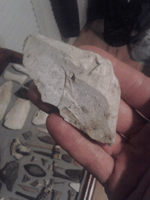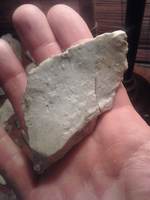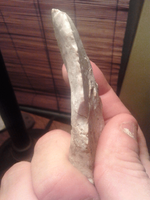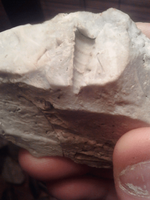Navigation
Install the app
How to install the app on iOS
Follow along with the video below to see how to install our site as a web app on your home screen.
Note: This feature may not be available in some browsers.
More options
You are using an out of date browser. It may not display this or other websites correctly.
You should upgrade or use an alternative browser.
You should upgrade or use an alternative browser.
Paleo - Early Archaic Unifacial
- Thread starter tomclark
- Start date
tomclark
Bronze Member
- Dec 18, 2006
- 1,177
- 1,641
- Detector(s) used
- ShadowX2, TEJON, Eyes, Pony Shovel
- Primary Interest:
- Other
- Thread starter
- #3
It would almost have to be context to determine paleo vs archaic on unifacials. And take patina into account. Unless the flaking over the top is particularly paleo, I don't think there is much difference. Same with end scrapers....many also found on this site, classic PES usually with graver spurs.
Paleo man here did a lot of work which required this type of tool, At this site we find many more tools like this one than broken or whole points. the worked edges are particularly acute in many cases. Nothing newer than Bolen has ever been found by me or any of my buddies at this site.
Paleo man here did a lot of work which required this type of tool, At this site we find many more tools like this one than broken or whole points. the worked edges are particularly acute in many cases. Nothing newer than Bolen has ever been found by me or any of my buddies at this site.
GatorBoy
Gold Member
- May 28, 2012
- 14,716
- 6,156
- Primary Interest:
- All Treasure Hunting
old digger
Gold Member
- Jan 15, 2012
- 7,512
- 7,352
- Detector(s) used
- White's MXT
- Primary Interest:
- All Treasure Hunting
I would say Paleo. The piece looks like it is made from Basalt. Archaic cultures didn't work much with Basalt. Just from my experience and judgement.
GatorBoy
Gold Member
- May 28, 2012
- 14,716
- 6,156
- Primary Interest:
- All Treasure Hunting
I appreciate the input..I did have to chip it out of stone. I kept the stone it fits in it like a little display.although I know the material.It is called Rice grain coastal plains chert.It gets its name from the many fossil inclusions that often look like grains of rice.
Last edited:
tomclark
Bronze Member
- Dec 18, 2006
- 1,177
- 1,641
- Detector(s) used
- ShadowX2, TEJON, Eyes, Pony Shovel
- Primary Interest:
- Other
- Thread starter
- #8
MMMMMmmmm....Rice Grain......!!! we could start a new thread about chert/coral/material types...but I only know Florida!
Here's a rice grain chert Greenbriar from the Santa Fe River near High Springs, FL. It IS one of the LAST "legal" (reported) finds during Florida's Isolated Finds Program, which the state abolished.

Here's a rice grain chert Greenbriar from the Santa Fe River near High Springs, FL. It IS one of the LAST "legal" (reported) finds during Florida's Isolated Finds Program, which the state abolished.

GatorBoy
Gold Member
- May 28, 2012
- 14,716
- 6,156
- Primary Interest:
- All Treasure Hunting
Man that's a nice greenbriar! I could still be wrong about the material but I do know its chert. I could go on and on about the isolated finds program too..and how the internet changed things... People disappointed me a lot.
Top Member Reactions
-
 3528
3528 -
 2090
2090 -
 2049
2049 -
 1158
1158 -
 1114
1114 -
 927
927 -
 849
849 -
 823
823 -
 818
818 -
 782
782 -
 770
770 -
 542
542 -
 531
531 -
 453
453 -
 452
452 -
 446
446 -
E
424
-
 413
413 -
 410
410 -
 404
404
Users who are viewing this thread
Total: 2 (members: 0, guests: 2)









